5 SEO Tips That Will Help You Get More Webinar Attendees

SEO involves optimizing your copy for search results. Optimization simply means satisfying user intent with regard to content relevancy. The incorporation of relevant keywords is another essential part of SEO.
By implementing the five key strategies presented below, you’ll be able to improve organic visibility for your webinar and increase the likelihood of reaching your desired target audience.
1. Do Keyword Research for The Topic
SEO is not very different from text optimization on blogs or other marketing platforms. It starts with generating a customer persona that will allow you to visualize and understand your audience better.
For your inbound marketing strategy, buyer persona and effective keyword research are two essential steps you should not miss. These in turn improve the chances of organic audience engagement with your proposed content and, thus, the generation of more leads.
Keyword research is vital to ensuring that your webinar ranks highly in search engine results pages (SERPs). With proper keyword research, you’ll be able to optimize your titles, descriptions, headers, etc. with relevant terms used by your audience. For example, if you want to provide a webinar on selling online courses, the keywords “sell online courses” are what you’d want to rank for.
Keyword research can be performed through a variety of applications. Tools like Surfer’s Content Planner can give you hundreds of keyword ideas that you could use with your blog or webinar’s landing page. Creating high-quality content around those keywords helps you drive more traffic and awareness.
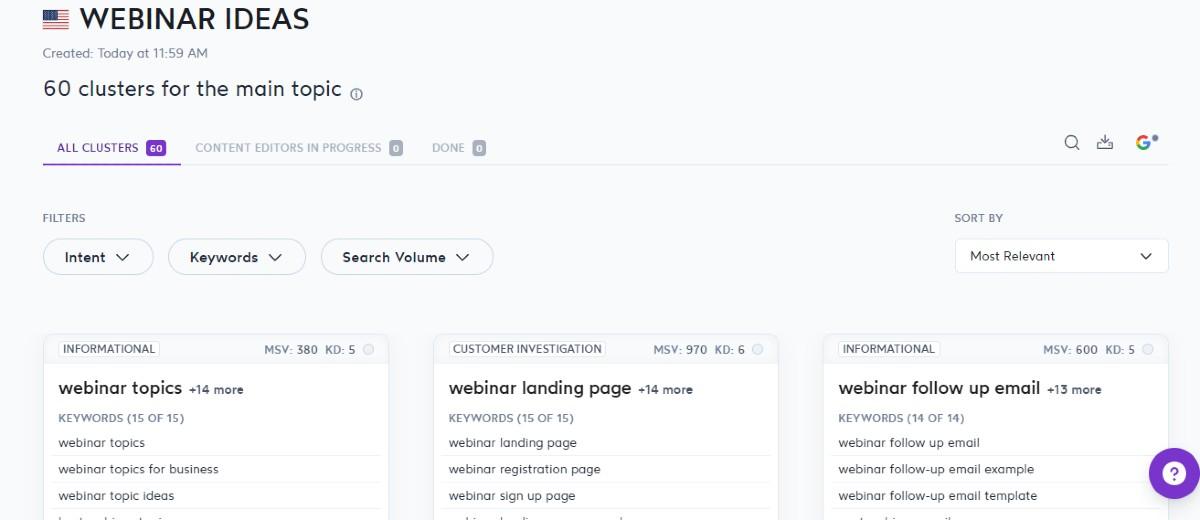
Source
Similar keyword research tools include SEMrush, Ahrefs, Google Adwords Keyword Planner, and Ubersuggest.
You can also perform quick and simple keyword research on YouTube. Just go to the YouTube search bar, enter your primary target keywords, and the suggestions will give you multiple keyword ideas.
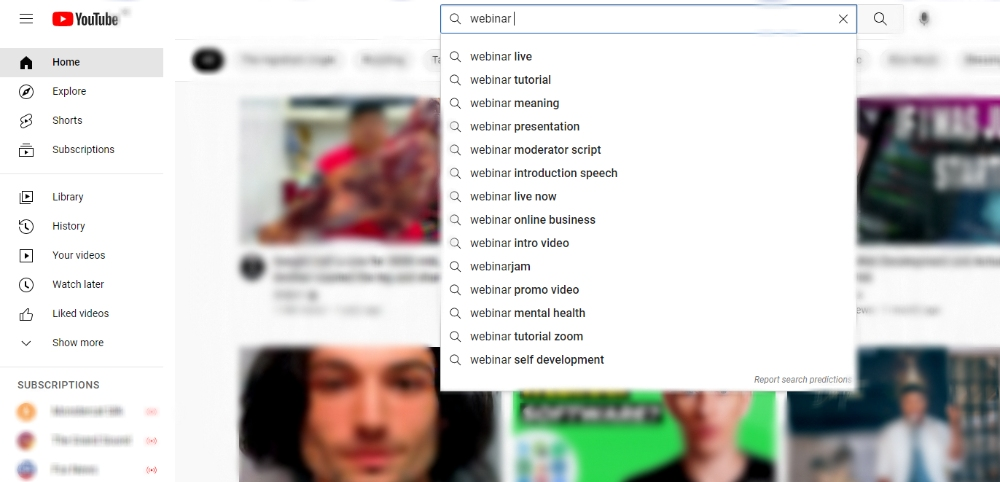
Source
Just keep in mind that there are multiple ways to do keyword research. A simple Google search will yield many ideas, from videos, news articles, and popular blog posts, that can inspire ideas for your webinar niche.
2. Optimize Your Videos
Various SEO software solutions can be used to perform optimization on text content like blog posts and articles. Optimizing videos is more or less similar to text optimization, with some refinement. There are metadata aspects that need to be optimized, for example.
The video title should be engaging and crafted to reflect the keyword intent of your webinar. Like meta descriptions in blog posts or landing pages, the video description should provide more detail about the webinar video.
In the example snippet below, Seranking.com, an SEO B2B platform, is promoting a webinar titled “Outrank Any Competitor with Micro-SEO Strategies.” The webinar title, description, headers, and copy for the webinar landing page have been optimized specifically for the keyword “micro-SEO strategies.”
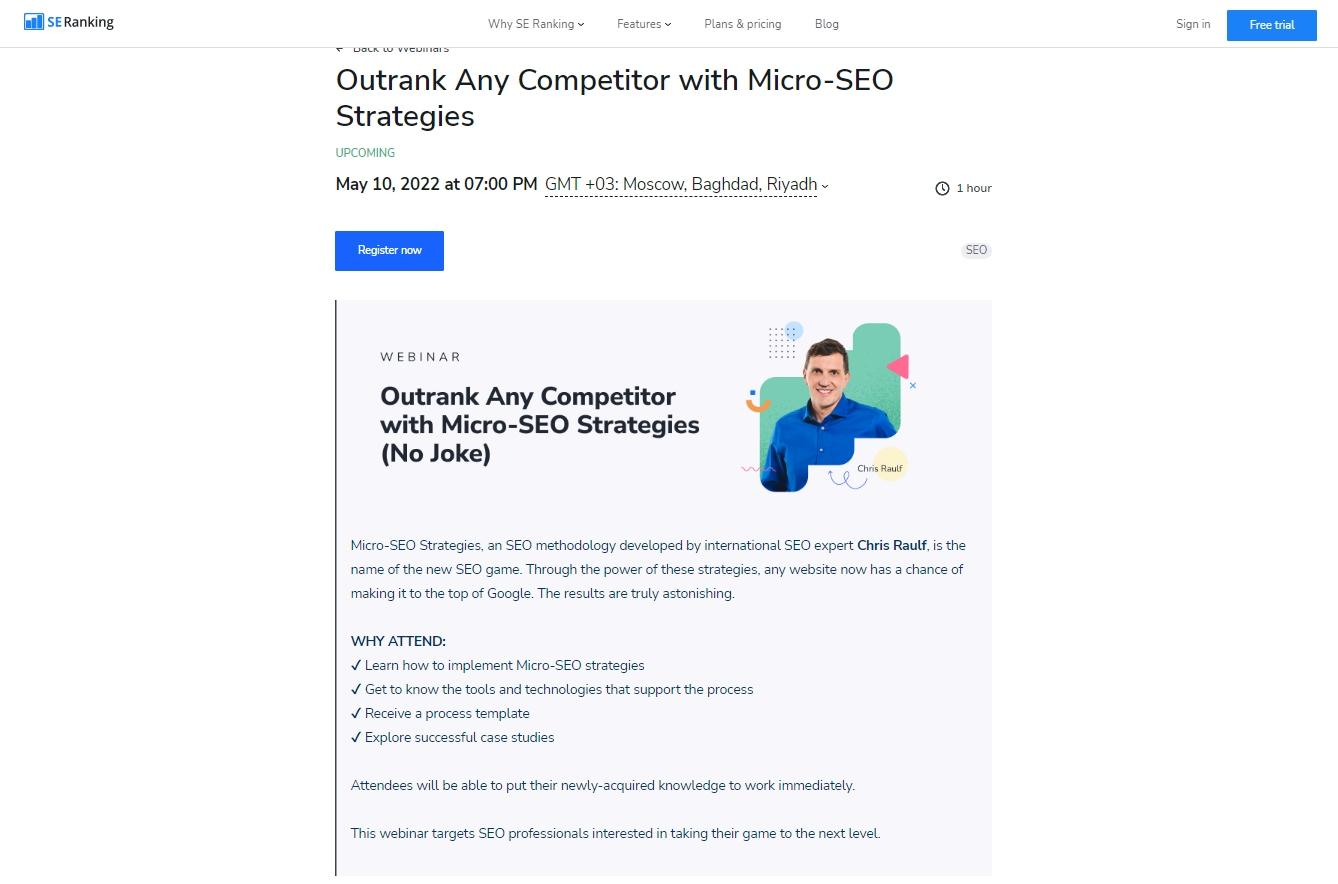
Source
After the live webinar was completed, Seranking made the video available on YouTube and optimized it further, thus appearing on the SERPs only a fortnight after the webinar.
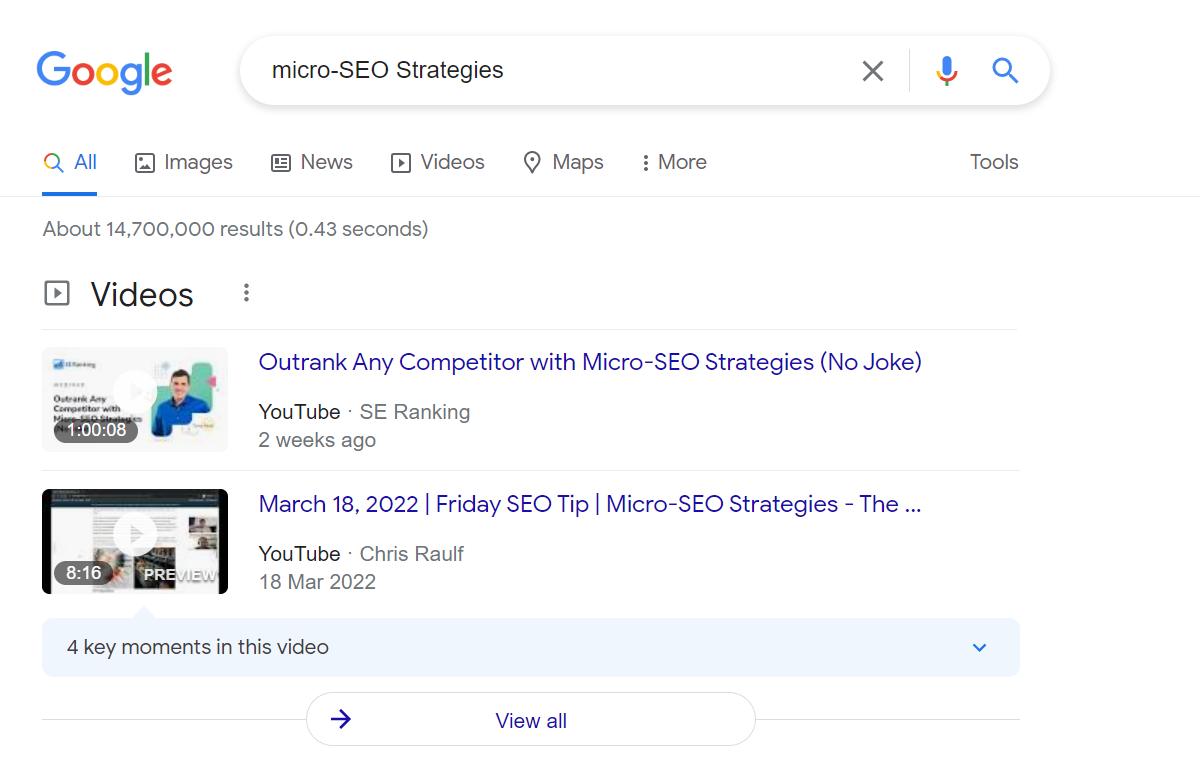
That’s the power of video optimization. Optimizing essential sections of your video, such as the titles, descriptions, and tags, lets search engines know what your video is about. That can then help your video rank higher for relevant search queries.
3. Leverage Social Media
Social media provides great platforms to promote your webinar. And there are various ways to go about it. You could start by promoting your webinar organically. This would involve creating high-engaging posts while incorporating the right keywords and hashtags. In fact, you’ll want to adjust your social media content schedule to ensure you’re reminding your audience of the webinar as it gets closer.

Source
You can promote your webinar across various relevant social media platform types. Most of the top social platforms have groups for various niches. For example, you’ll find various marketing groups on LinkedIn and Facebook. With the permission of the admins, you may be able to promote your marketing webinar there.
The other technique is pretty obvious and will require some budget – using influencers. Influencers have a loyal audience, and they can help you get some of those followers to attend your webinar.
But, of course, you don’t want to go with just any influencer. Identify the ones your target audience listens to. That means you’ll have to do more audience research. Find out the micro and macro-influencers your audience follows and reach out to them for collaboration.
4. Optimize Your Webinar Landing Page
Optimizing your webinar’s landing page makes it easier to market your webinar and show up higher in search engine results pages (SERPs). That is usually part of a broader SEO strategy involving other resources such as your blog, landing page, product pages, or social media pages.
Depending on your needs, you might require a webinar registration page, a live webinar landing page, and a resources page such as a Q&A or written transcript page.
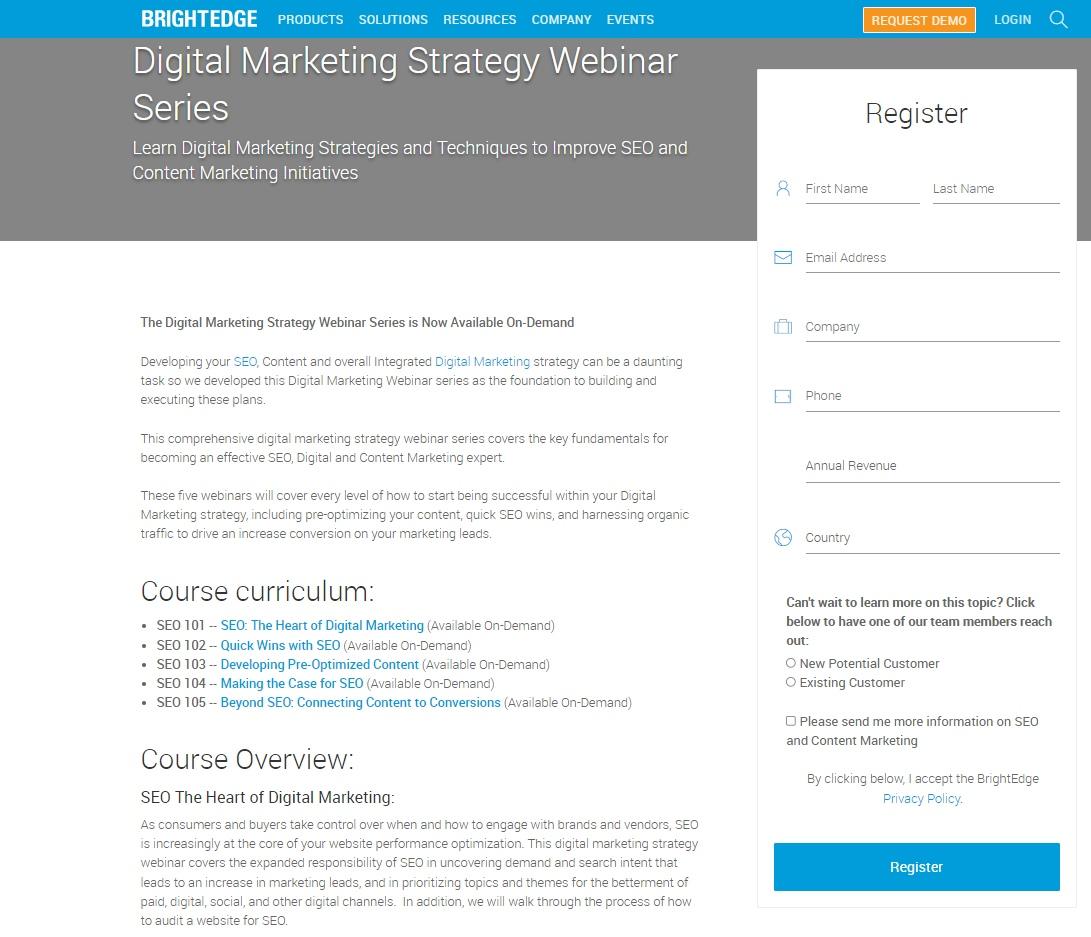
Source
The above snippet is a typical webinar landing page that has been optimized. The specific landing page is also a pillar page that provides a course overview of the search items “SEO” and “digital marketing strategy.” On-page SEO elements that can be observed include optimized keywords, links, a catchy and succinct headline, and a bold call to action (CTA).
Take the following moves into consideration even as you promote your webinar:
-
Post and link to insightful questions that will form the core of the discussion on your blog or socials to increase pre-engagement with your audience.
-
Create an attention-grabbing headline.
-
Share snippets of your webinar.
You can further create a buzz in the lead-up to your webinar, for example, through guest posting and releasing a string of blog content related to your webinar topic.
5. Run Remarketing Ads
As we’ve already highlighted, there are tons of free techniques to drive more signups and attendees to your webinar. However, you don’t have to limit yourself to unpaid options. Also, SEO techniques tend to take time to produce results. Therefore, you can also invest in paid media for even better results if you have a slightly bigger budget.
A great place to put that marketing budget is in remarketing ads. The idea here is pretty simple. You track the people coming to your webinar registration page or landing page. You can also track everyone landing on your website. Social media platforms like Facebook help you do that through Facebook Pixel. Then, use search or social media retargeting ad formats to retarget all visitors who did not sign up for the webinar.
The strategy will effectively help you reach people who showed interest in your webinar or brand but failed to sign up for the webinar. It gives you another shot to “convert” some potential attendees.
Besides remarketing ads, you can also use the standard ad formats to promote your webinar. However, you’ll want to target specific audiences for better results. For example, specify the interests, behaviors, and even demographics of the people to whom the ads should be shown. Additionally, you’ll want to use relevant keywords in your copy and a compelling call-to-action message to drive more people to your webinar registration page.

Source

Doing so helps you utilize your ad budget on people most likely to find your webinar interesting enough to sign up and attend. Essentially, it helps you optimize your ROI.
In Closing
Webinars provide the opportunity to present content in a focused and in-depth manner. That can, in turn, be used to generate leads and drive sales, besides supporting a long-term content strategy.
SEO as a technique will improve search results for your webinar and reduce the likelihood that your webinar will end up in online oblivion. In addition, integrating techniques such as keyword research, transcription, and schema markup further optimize the marketing of your webinar.
Ultimately, your webinar attendance will vastly improve if you implement the five best practices and expert tips discussed above.
About the author:
Tomasz is the Marketing Executive & Partner at Surfer, a platform that merges content strategy, creation, and optimization into one smooth process. With almost a decade of experience in the industry, he is responsible for incorporating and executing marketing strategies. Currently, he manages a team of 4 wonderful experts.




